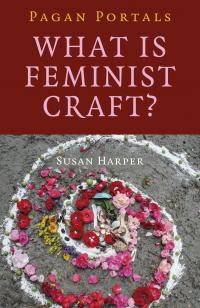
 July in the Wheel of the Year Part 1: Dog Days, Festivals and Folk Customs - Lucya Starza
July in the Wheel of the Year Part 1: Dog Days, Festivals and Folk Customs - Lucya Starza
If you follow the Wheel of the Year, July can seem a fallow month. It falls between Summer Solstice on June 21, and Lammas at the start of August and doesn’t contain any of the eight main festivals that many modern pagans celebrate. But there’s lots to celebrate in July including seasonal folk customs and festivals in many traditions.
The Dog Days of Summer
The Dog Days of Summer run from July through to August. According to The Old Farmer's Almanac in 2021 they start on 3 July, although that date will vary depending on where you are in the world because they relate to when Sirius, the Dog Star, rises in the sky at dawn. The 1552 edition of the Book of Common Prayer says the "Dog Daies" begin on July 6 in England and end on August 17. In Ancient Rome, the Dog Days ran from July 24 to August 24 and some countries still use that reckoning.
The Dog Days supposedly mark the hottest of the year. The name comes from an ancient belief that Sirius, which is the brightest star in the constellation Canis Major, brought hot weather when it appeared close to the sun. Although the appearance of Sirius doesn't actually affect the weather, it has often happened during the sultriest days of summer - and the term is still used for extremely hot spells.
For ancient Egyptians, Sirius first appeared just before the annual Nile flood, which was vital for agriculture. Farmers would watch for the star as an indicator that the flood was due. Although the ancient Egyptians looked forward to the Dog Days, many other cultures considered them to be a time of ill-omen. Brady’s Clavis calendaria, or a compendious analysis of the calendar, published in 1813, describes the Dog Days as an evil time "when the seas boiled, wine turned sour, Quinto raged in anger, dogs grew mad, and all creatures became languid, causing to man burning fevers, hysterics, and phrensies". A traditional English folk saying implies the Dog Days can either be a good or a bad sign depending on the weather:
Dog Days bright and clear
indicate a happy year.
But when accompanied by rain,
for better times our hopes are vain.
English Folk Customs
Looking at other July traditions, there were many summer fairs in England historically– some still take place in normal times. Steve Roud in The English Year, mentions Farlop Fair taking place in early July around an oak tree in Epping Forest, near London. Stagshawbank Fair was on July 4 at Corbridge in Northumberland. Old Midsummer’s Day falls on 5 July and there were many festivals to mark it, often with bonfires. On July 6, Kilburn Feast, in North Yorkshire, was a massive horse fair. On the first Saturday in July, it was traditional to change the rushes that were at one time common as household floor coverings. Rush Bearing ceremonies involved carrying rushes and flowers around the village in a parade, they were often woven into symbolic shapes. The whole thing was like a carnival. St Swithin’s Day ison15 July. British folklore says if it rains on St Swithin’s Day, it will rain for 40 days more. One poem goes:
St Swithun’s day if thou dost rain
For forty days it will remain
St Swithun’s day if thou be fair
For forty days ’twill rain nae mare
For Christians, 20 July is the feast of St Margaret of Antioch – a female saint who according to legend defeated a dragon. She was also called upon to help with the pains of childbirth. On 25 July is the Ebernoe Horn Fair, in West Sussex. Horn Fairs occur in various parts of England and their origins aren’t entirely known. Some of them may date back to ancient pagan times, but it isn’t clear through historical records. In the Ebernoe Horn Fair, a sheep is roasted, and a game of cricket played. The winning team is given the sheep’s horns, while everyone enjoys a feast of roast lamb.
Roman Festivals
Among the many ancient festivals in July, In Every Day Magic, Melusine Draco notes that 21 July is Roman Lucaria, which is a day sacred to Concordia, the Roman Goddess of concord or peace. Neptunalia falls on 23 July and she writes: “Honouring the Roman Neptunalia on this day would encourage ample rainfall for the crops and prevent drought… as his festival falls at the height of summer, booths of foliage were erected to protect worshippers from the Sun. A perfect day for a summer garden party.”
John Dee’s Birthday
A birthday to celebrate in July is that of John Dee, the famous Elizabethan scientist, astrologer, and occultist. He was born on 13 July, in 1527, in London. In his early life he made a name for himself as an astronomer and mathematician, but later turned to the occult to acquire knowledge. In the 1580s he began to try to contact angels with the help of "shew-stones". He teamed up with the scryer Edward Kelley (or Kelly). Together they wrote details of the Enochian language - supposedly the language of the angels - revealed through their scrying sessions. His crystal ball, dark mirror and some of his other items are on display in the British Museum.
This is the fourth in a series of posts I’m writing for the Moon Books Blog on the theme of the Wheel of the Year. My posts will be compiled and edited into a book: Pagan Portals – Wheel of the Year. Other books by Lucya Starza in the Pagan Portals series include Candle Magic, Guided Visualisations, Poppets and Magical Dolls, and Scrying. Lucya edited the community book Every Day Magic – A Pagan Book of Days.
Categories:
0 comments on this article






